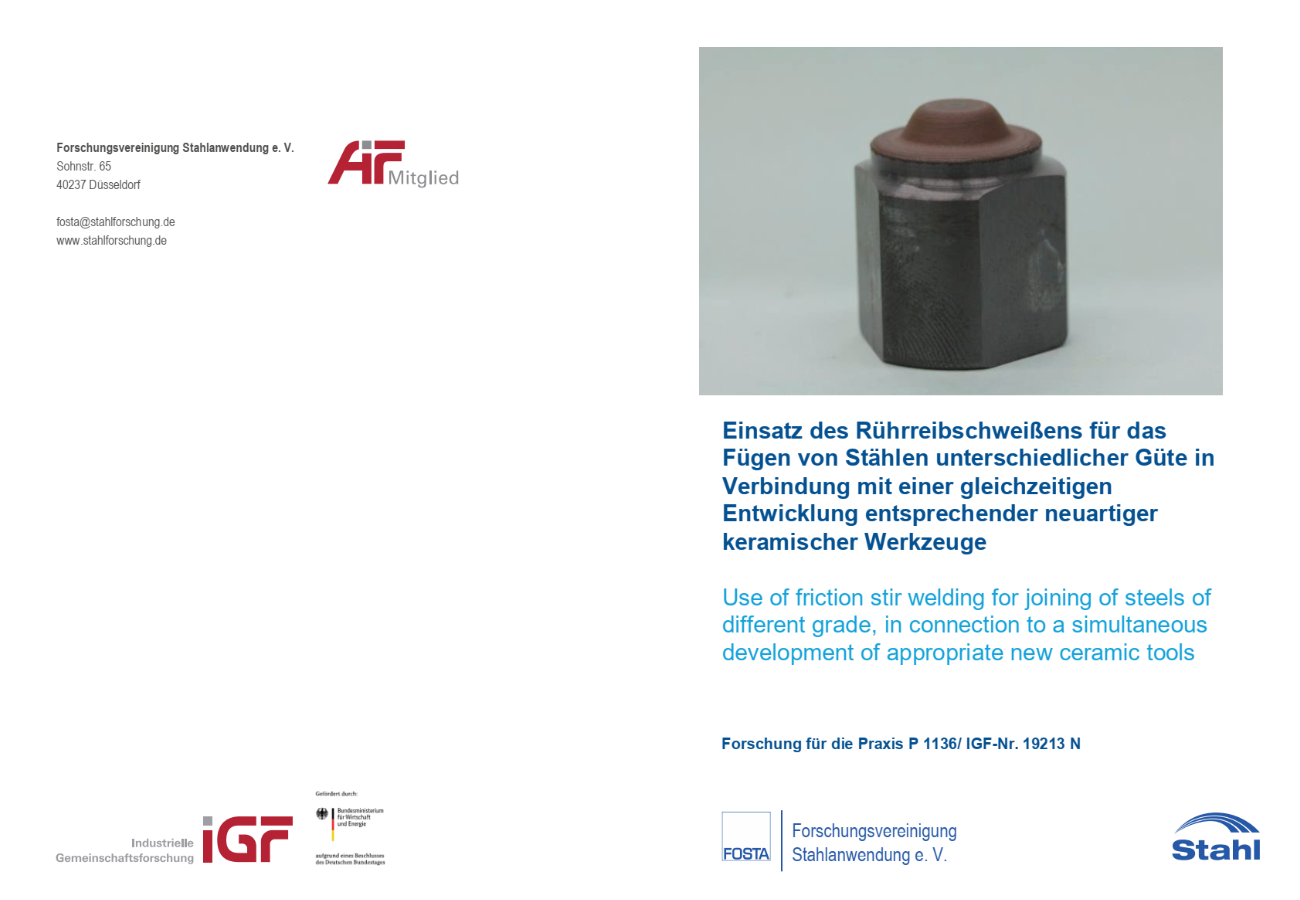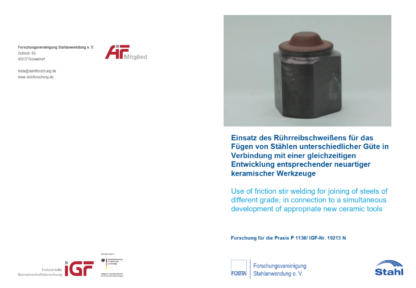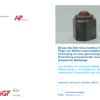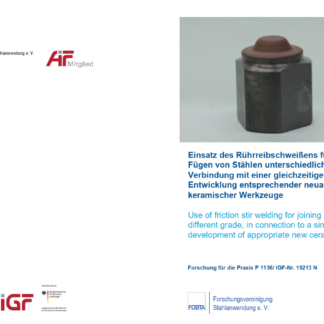Description
P 1136 – Use of friction stir welding for joining of steels of different grade, in connection to a simultaneous development of appropriate new ceramic tools
The most important and first development goal in the project was the economic expansion of friction stir welding (FSW) for joining steel materials, also with high strengths. A lot of experience, which is available at the SLV Berlin-Brandenburg and also experimental applications were included in the project. Due to inquiries, mainly from the fields of shipbuilding, offshore, vehicle construction and special applications and demands of the project accompanying committee (PA), steel joints of different grades were welded and examined. To name a few of them: S235, S355, S690, CrNi18-10 and H800. Blind seams, butt joints and lap joints were welded. For two types of steel, butt joints were also welded on both sides to cover greater thicknesses. In addition, it was examined whether the use of shielding gas was necessary and how this could be optimally designed (simple gas nozzle above the friction stir tool, drag nozzle, etc.). In the further course of the project, this was dispensed with. No significant advantages could be determined. Material-technical investigations such as tensile tests, bending tests, X- rays etc. confirm this tendency. The tested samples all showed quality values that were in the range of the base material.
The second important point of the project was the tool development. This is also the main reason why FSW on steels is not very widespread (except for applications in the university or institutional field of research). During the friction stir welding process on steels, the friction stir tools are exposed to enormously high temperatures ~1200°C (e.g. only ~500°C for aluminium), corrosive and abrasive wear. Mainly tungsten-rhenium alloys are used for FSW steel welding (WRe05, WRe25), but also other special metallic materials such as tantalum-based materials and solid carbides are used. Another variant are tools made of polycrystalline cubic boron nitride (pcBN).
Another promising and much more economical option is offered by conventional ceramic material systems. Especially these systems were investigated in the research project by the SLV Berlin-Brandenburg and the FGK GmbH from Höhr-Grenzhausen. It was important to understand the interactions between the material to be welded and the ceramic tool. Derived from the experiments and the subsequent laboratory tests, a material system has been developed, silicon nitride. This material – chemical formula Si3N4, a non-oxide ceramic – has proven to be the best material for all the steels tested. Oxide ceramics, although easier to produce, were not convincing. Only in the course of the project, and only towards the end of it, improvements were achieved on some oxide ceramics through special geometric and chemical adjustments. But this is another important result of the research project: The understanding of the failure mechanisms and their effects on the various ceramic material systems.
Published in:
May 2021
Authors:
R. Boywitt, Dr.-Ing. M. Emmel




